(Old) Watertown High School
341 Mount Auburn Street
Watertown, Mass.
Year Built: 1910
This building is on the National Register of Historic Places.
The subject building was originally Watertown High School from 1913 to 1925 and was the second Watertown High School. From 1925 to the 1980s, the building served as the East Junior High School and then more recently leased by the town as assisted living facility. The building was named to the National Register of Historic Places in 2006.
The town applied for a permit in 1910 to construct this school and construction continued through 1913. The building is a striking and dominating 3½ stories, built on a high basement. It is clad in red brick and lavishly ornamented with limestone trim. Symmetrical in plan, the building consists of a long main block, projecting three-story sections at each corner and a massive one-story bow-fronted section centered on the façade and south elevations.
With the exception of the porticos, the front and rear elevations are similar in massing. The building footprint is generally that of an “I” turned on its side with half-circles projecting from each side of the shaft. The main block is sheltered by a steep, slate-covered hip-roofed interrupted on the north and south slopes by a central Flemish cross gable flanked by hipped-roof dormers with Flemish gable ends. Like the main roof, the dormers and cross gables are sheathed in slate with copper ridge flashing. Two symmetrical large chimney-like brick ventilation ducts sit astride the ridge, and one small brick chimney projects from the south slope of the roof toward the east end of the ridge.
The three-story corner sections, the bow-front sections and the porticos have flat roofs, sheathed in rubber membrane and rimmed by brick parapets. The parapets on the corner sections and porticos are crenellated, while those on the bow fronts have a straight stone cap.
At the two main entries at the front (north), granite steps rise to the deep porticos composed of brick and stone piers supporting a stone basket-handle arch and heavy stone cornice surmounted by a crenellated brick parapet with a central Flemish gable. A boldly detailed shield decorates the gable. Surrounded by scrolls and consoles, the shield contains an open book set in relief. Other elaborately carved ornament found at the entrance porticos includes lions’ heads at the principal cornice, a carved face on the keystone at the archway, triglyphs and carved panels at the frieze and above the capitals, shell and scroll details at the pier capitals, as well as rusticated dressed quoins on the piers. The recessed entries are framed by sidelights rising to a fanlight with sunburst-pattern tracery.
Windows, many with elaborate trim, are concentrated on both the front façade (north) as well as the rear elevations (south). They vary in size and trim as they rise up in the building, but are generally grouped and mullioned with bold limestone surrounds, particularly prominent lintels and often transoms. The windows typically contain double-hung wood sashes of various dimensions and light patterns. The most common window type is a four-over-six flat-arched sash at the first and second stories, and four-over-six with a segmental-arched upper sash at the third story. Large windows at the rear have nine-over-nine sashes. The tall vertical steel windows in the bow-front are grouped in sets of three with heavy stone mullions. The main sashes are one-light wide with two fixed vertically stacked lights over a four-light casement. Each double transom has a two-light sash. The windows at the rear bow are set in groups of three with tall ten-light vertical sashes and four light transoms.
On the façade, the windows in the one-story bow are enframed in a Gibbs surround. The third-story windows, which also display Gibbs surrounds, are set in a Tudor arch, surmounted by blind Tudor-arched panels. The louvered panels in the vent stacks astride the roof are set in a stone surround matching that at the third-story windows. The gable windows also have Tudor-arched lintels. The fenestration on the rear (south) elevation is similar to that of the front (north) façade, but the trim is simplified. Brick rather than stone frames the windows of the central bays as well as those on the bow front section.
The symmetrical east and west elevations have projecting end pavilions framing a central recessed pavilion that is topped by a Flemish gable. The end pavilions have windows at the third story and basement, while the recessed central sections have three sets of double windows at the second and third stories. A group of three windows in the gable end has a tall central window and stepped stone surround. At the west elevation, a double entrance door is located in the central bay at the basement story.
Among the most notable features of the building is its profusion of carved limestone trim, some of the most ornate has been described above. Other limestone ornament includes a water table, sill courses, lintel courses, keystones, shields carved in relief at the lintels, a heavy molded sill course at the third story, molded hoods at various windows, carved compound arches and spandrels at the third story, and coping stone at the parapets.
This school was modeled after Brigham's 1906 design of the Fairhaven High School and Academy.
Registries
• National Register
References
• Building Permit, Town of Watertown, 11/19/1910, #891.
• Massachusetts Cultural Resources Information System, Massachusetts Historical Commission, Inventory No. WAT.276 (Watertown High School, 341 Mount Auburn Street, 1914, Charles Brigham, architect).
• "Charles Brigham," MacMillan Encyclopedia of Architects, Adolph Placzek, entry written by Margaret Henderson Floyd, 1982, p. 288-9 (Watertown High School, Charles Brigham architect).
• National Register of Historic Places Registration Form, August 9, 2006, Leslie Donovan, Ann Clifford, Karen Davis, Betsy Friedberg
• National Register of Historic Places, 9/22/2006, Charles Brigham, architect.
Links
• http://www.davidjrusso.com/architecture/brigham/buildings/AddressSummary.php?id=11956995693012
Images
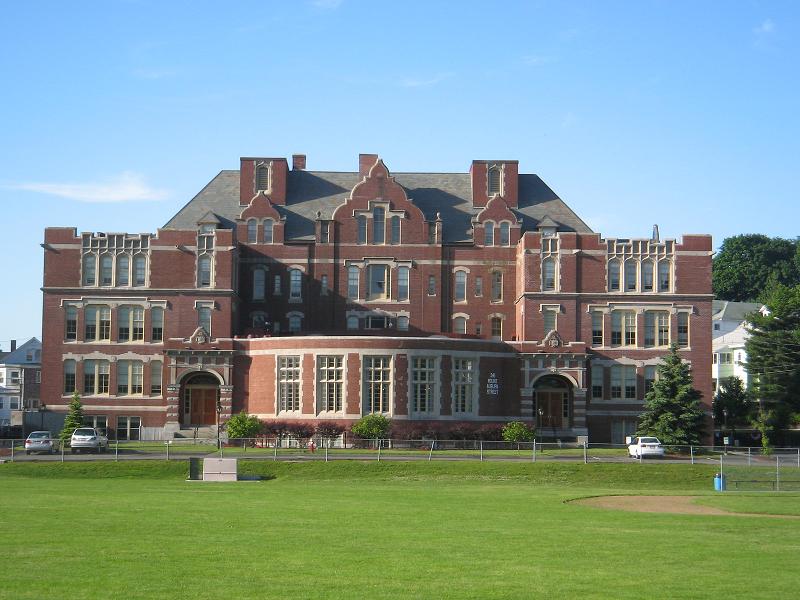
2008
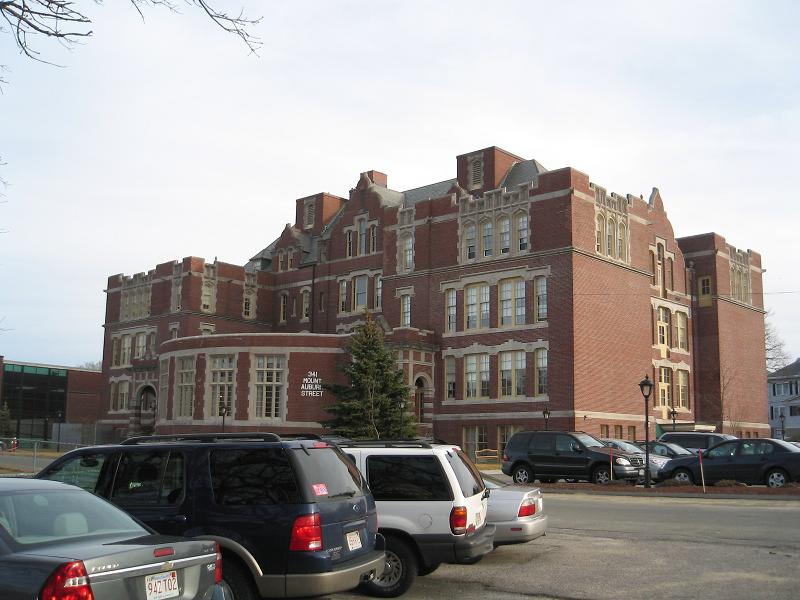
2008 - Detail of Front of Building
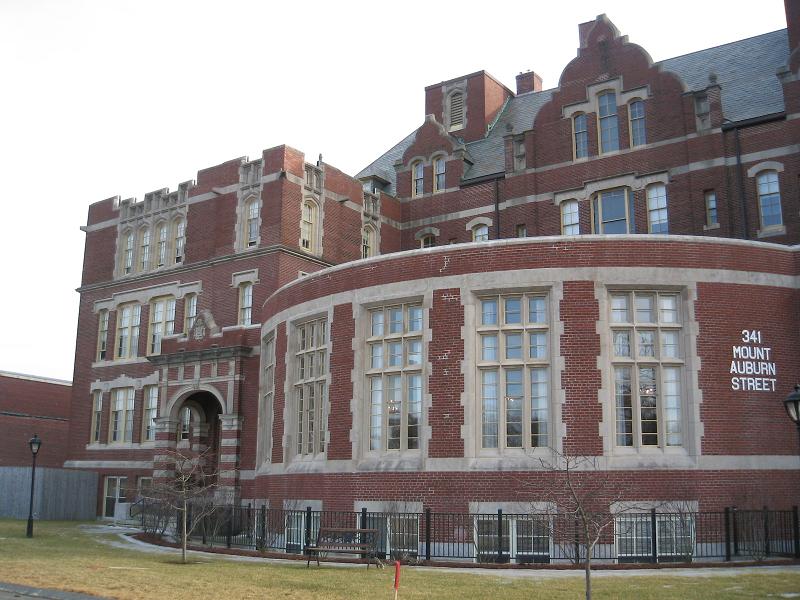
2008 - Detail of Front of Building
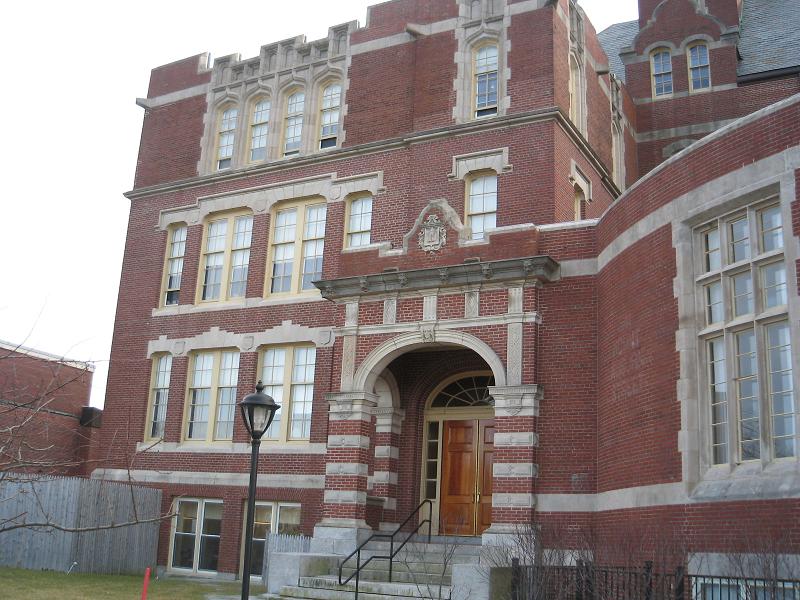
2008 - Detail of Front of Building
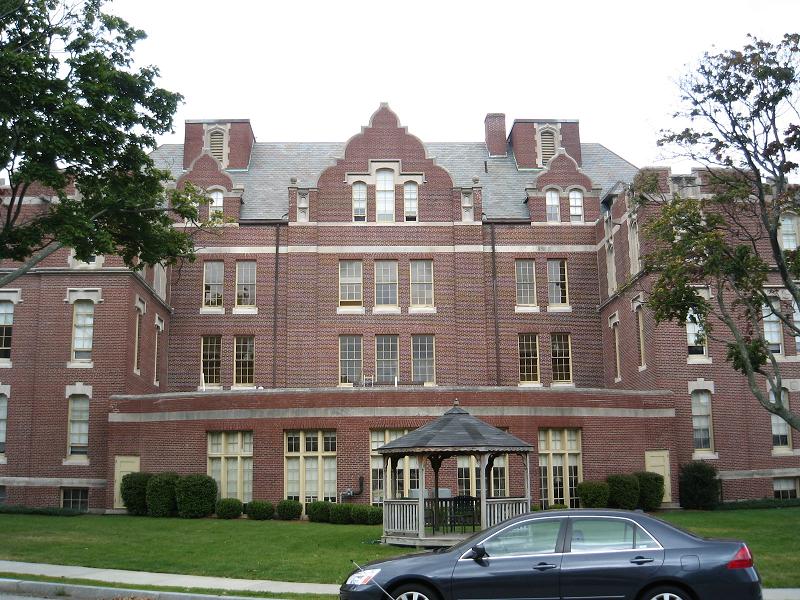
2008 - Rear
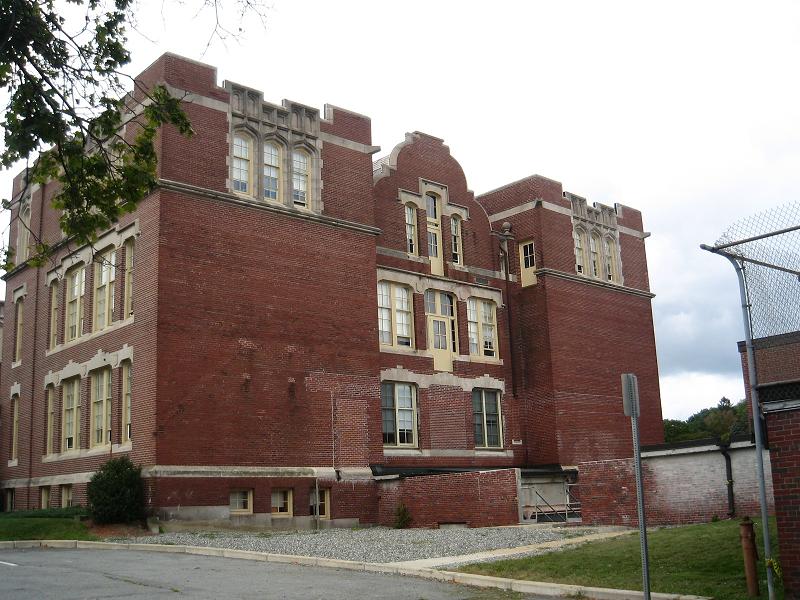
2008 - East Side
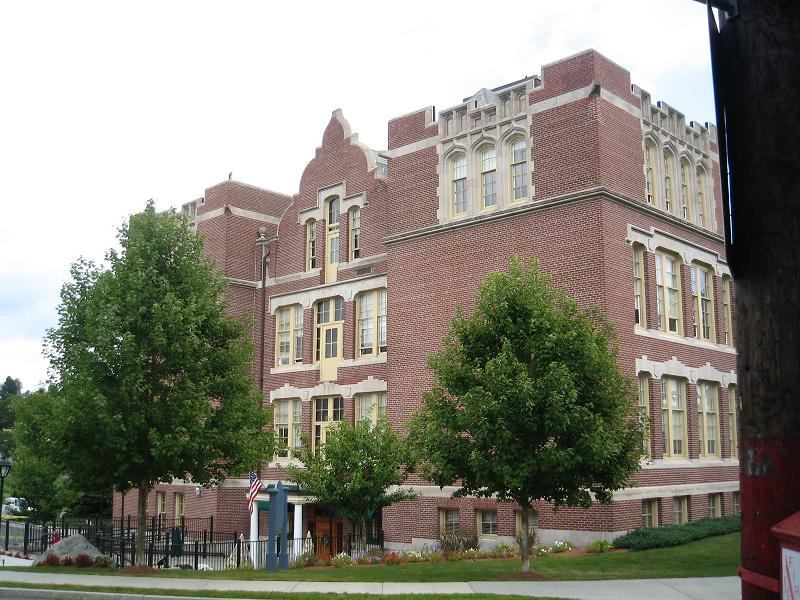
2008 - West Side
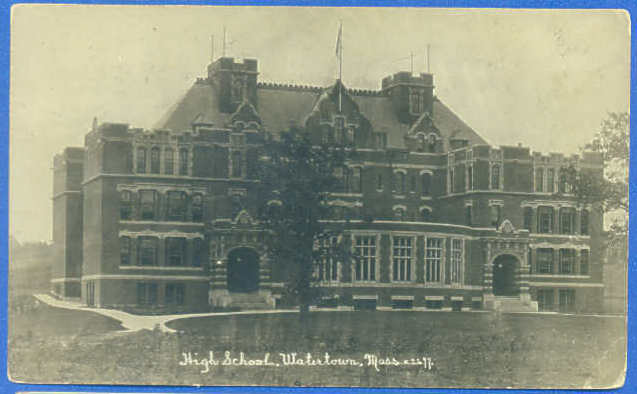
ca. 1920, see Crenellation and Cresting
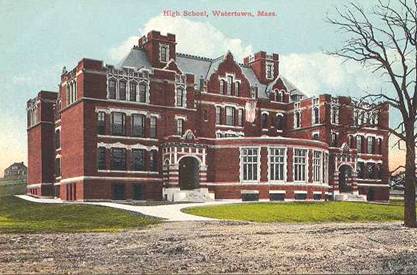
See Crenellation and Cresting
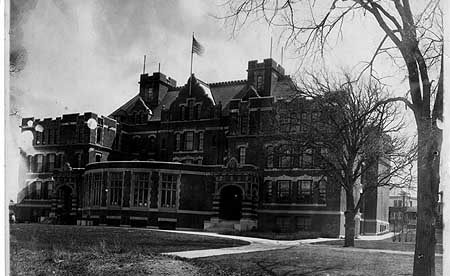
ca. 1920, see Crenellation and Cresting
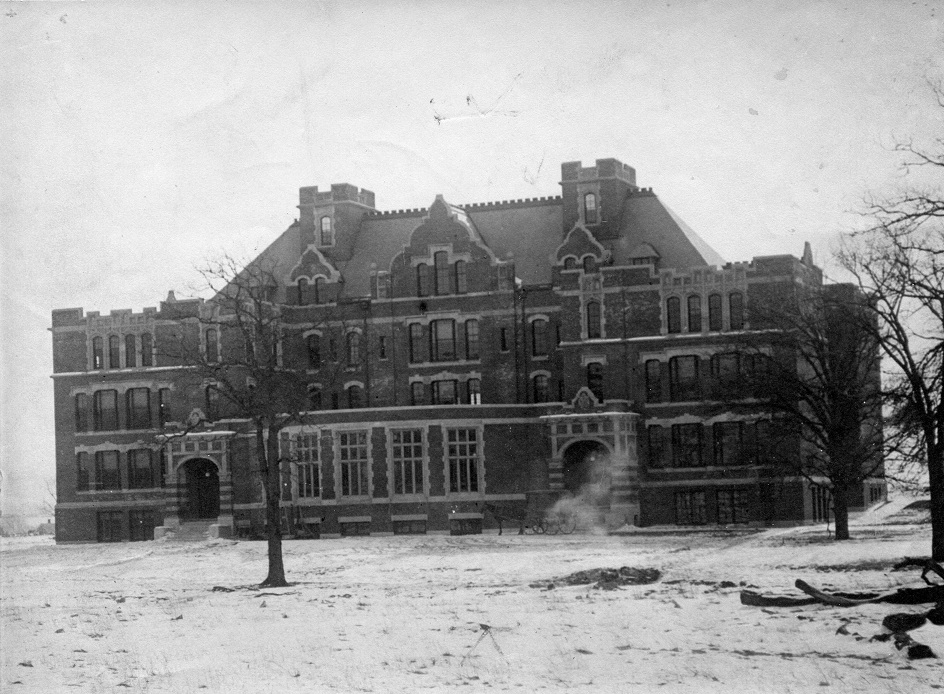
March, 1913
<<< Back to Design List
|
|
|